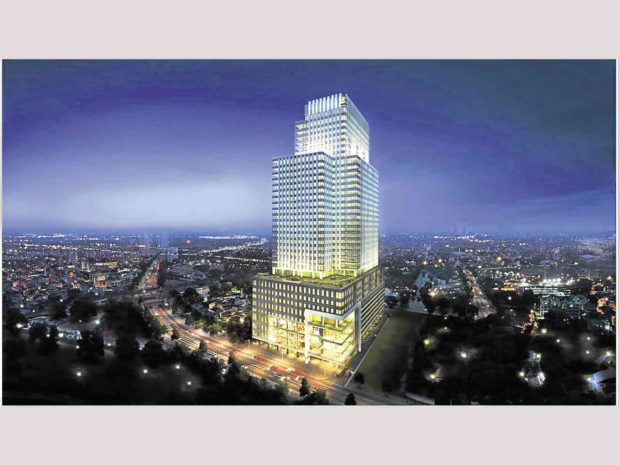Cebu goes green with ArthaLand
A company’s work force is its most important resource.
An employer who refuses to take into consideration factors such as an office space’s thermal comfort, noise, lighting and air quality is not only risking employees’ health and well-being but also their productivity which, in turn, will have a negative impact on the company.
According to the “Better Places for People” campaign by the World Green Building Council, people whose office desks are beside or near a window have 46 more minutes of quality sleep every night, compared to those who have no access to a window from their workstations.
The same research also stated that employees’ work performance drops by 4 percent if the workspace is too cold, and by 6 percent if it is too hot. One’s work performance drops by a whopping 66 percent when there’s too much distracting noise. Good air quality in your place of work improves your productivity by 8 to 11 percent.
Such is why ArthaLand is embarking on a sustainable development with Cebu Exchange.
“We’d like to bring the sustainable standard that we espouse to the Cebu market. We believe the Cebu market is growing tremendously, there’s an opportunity here for sustainable development,” said Leo Po, executive vice president and treasurer of ArthaLand Corp.
The boutique real estate developer partnered with ARCH Capital Management Co., a Hong Kong-based fund management firm, to build the 39-storey green building.
The mixed-use commercial and office development will have a gross floor area of 108,550 sqm and is divided into several zones. It will also have four levels of retail space and two levels of basement parking.
“We’re looking at potentially having a gym, a bank, food retail, courier services and all the other supporting services for the entire business ecosystem. The idea is to create a real business ecosystem where instead of having to travel and take a car, or walk a fair distance to get things done, you can do everything inside the building. We’re aiming to create a business ecosystem that also reduces carbon footprint,” Po explained.
“The Cebu Exchange is going to be the largest green building in the country,” he added.
On the 12th floor of Cebu Exchange is a Terrace Garden, a jogging and walking path that promotes activity and exercise, and which can provide some fresh air for the people working in the building. A Sky Park on the 33rd floor will serve the same purpose for those working in the higher zones of the building. It will be another space where people can meet up and unwind from their daily grind.
As part of its sustainability blueprint, ArthaLand is also using low emitting, non polluting materials in building Cebu Exchange to provide a healthier environment and maintain good air quality within the structure. Low voltage lighting systems and energy-efficient air conditioning systems in the common areas will bring down the total power consumption.
The world-class, sustainable developer is also using double-glazed glass panels in all the floors for an optimized building envelope, to reduce the amount of heat that goes in the building.
Cebu Exchange is meanwhile one of the few projects that has its own graywater system where collected rainwater will be filtered and used for flushing and landscaping.
“And standard in all our facilities, we have a materials recovery facility that helps us segregate the waste so that instead of throwing it away, you can actually facilitate for more efficient and easier recycling,” Po said.
Arthaland meanwhile takes pride in Cebu Exchange having achieved dual building certification both from LEED and BERDE—proof that the company remains committed to build sustainable, green structures.
“They were the first developer to have a dual certified residential building in Manila called ‘Arya’ and they will also be the first to have a dual certified office building,” said Urban Land Institute Philippine National Council (ULI) and Philippine Green Building Council (PhilBGC) chair Raymond Rufino.
Rufino pointed out that in the long run, you’ll notice that on the financial aspect, green buildings can deliver better returns for both the owners and the occupiers, which means that the profit side is good.
“With green buildings, you really get to hit the people, planet and profit buckets—all three buckets—in one initiative or one effort. Going green, there’s no negative, there’s no loss. It’s one of those few things we can do where everyone is a winner,” Rufino stressed.
“We like to think global but act local. By applying both the LEED standard and the BERDE standard, we are not only looking at the global standard and what’s going on out there in terms of the requirements for sustainability, but we’re also looking at it from the Philippine Green Building Council’s perspective of what is most applicable in the local environment,” Po explained.
“That is really our thrust in Arthaland, to provide for more sustainable projects so all our projects henceforth will be dual certified in the different various capacities depending on the market and the type of project,” he concluded.















